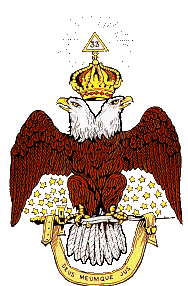

"As time rolled on, it passed from the Sumerians to the men of Akkad, from the men of Akkad to the Hittites, from the denizens of Asia Minor to the Seljukian Sultans from whom it was brought by the Crusaders to the Emperors of the East and West, whose successors were the Hapsburgs and the Romanoffs."
"In recent excavations, the city-emblem of Lagash was disclosed also as a lion headed eagle sinking his claws into the bodies of two lions standing back to back. This is evidently a variant of the other eagle symbol".
"The city of Lagash is in Sumer in Southern Babylonia, between the Euphrates and the Tigris and near the modern Shatra in Iraq, Lagash had a calender of twelve lunar months, a system of weights and measures, a banking and accounting system and was a center of art, literature, military and political power, five thousand years before Christ".
"In 102 B.C. the Roman Consul Marius decreed that the Eagle be displayed as a symbol of Imperial Rome. Later, as a world power, Rome used the Double-Headed Eagle, one head facing the East the other facing the West, symbolizing the universality and unity of the Empire. The Emperors of the Holy Roman Empire continued its use and the symbol was adopted later in Germany during the halcyon days of conquest and imperial power".
So far as is known, the Double-Headed Eagle was first used in Freemasonry in 1758 by a Masonic Body in Paris - the Emperors of the East and West. During a brief period the Masonic Emperors of the East and West controlled the advanced degrees then in use and became a precursor of the "Ancient Accepted Scottish Rite".
The Latin caption under the Double-Headed Eagle - "Spes Mea in Deo Est" translated is "My Hope Is In God".
Boyer Chapter Commanders of the Rite
|
Name |
Office/Status |
Year Elevated |
| Allen, Jacob B. | Active | 1981 |
| Atkins, John T | Inactive | 1999 |
| Blalock, Charles B. | Inactive | 1992 |
| Blaylock, Joseph N. | Active | 2001 |
| Brown, Robert E. | Inactive | 1979 |
| Butler, Ernest | Active | |
| Butler, Weston B. | Active | 1981 |
| Carmon, M. Trent | Active | 1993 |
| Chavis, Clarence E. | Active | 1985 |
| Coward, Wilbert. | Active | 2005 |
| Coleman, Jimmy | Deceased | 2005 |
| Davis, Arnold D. | Active | 1984 |
| Deans, Robert L. "Bobby" | Active | 2005 |
| Drayton, Philip J. | Active | 2001 |
| Evans, Jimmy | Treasurer | |
| Hall, James G. | Inactive | 1997 |
| Hinton, Sidney L. | Deceased | 1994 |
| Hodge, Robert E. | Deceased | 1979 |
| Holloway, Bobby F. | Inactive | 1981 |
| Hunter, Charles W. | Deceased | 1982 |
| Johnson, James C. | Deceased | 1997 |
| Jones, Nord E. | Inactive | 1998 |
| Jones, Robert J. | Inactive | 2000 |
| Lewis, Cornell B. | Inactive | 1998 |
| Lightner, Clarence E. | Deceased | 1982 |
| Lynn, William M. | V-President | 1994 |
| McClain, Henry C. | Active | 1982 |
| Moore, John R. | Deceased | 1979 |
| Newkirk, Rogene E. | Deceased | 1975 |
| Peebles, Paul E. | Deceased | 1984 |
| Sewell, Theodore R. | Deseased | 1995 |
| Smith, III, William F. | Active | 2001 |
| Spearman, Ben | President | 2006 |
| Spence, Joseph | Active | 1994 |
| Spence, Sr., Wilbert | Active | 2005 |
| Spencer, Lawrence D. | Inactive | 1995 |
| Wall, Jr. Richmond | Active | 2001 |
| Wilkins, Malachi | Deceased | 1979 |
| Williams, James M. | Active | 1979 |
| Williams, Robert L. | Active | 1994 |
Affiliated Members
| Peer Linwood Ebrons |
Peer Ronnier Burton |